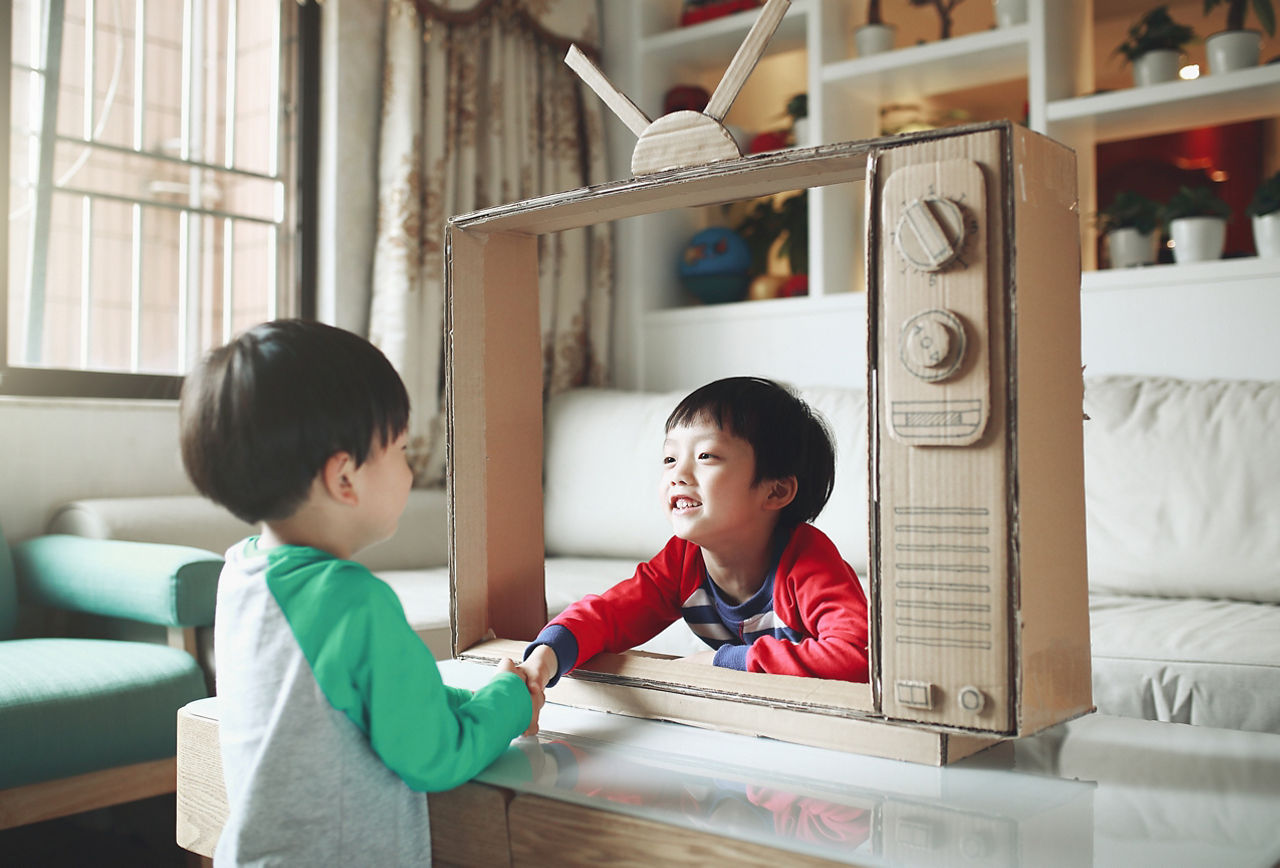Danone Specialized Nutrition (Malaysia) Sdn Bhd supports exclusive breastfeeding for your infant’s first six months of life. After six months of age, infants should receive age-appropriate complementary foods while breastfeeding continues for up to two years of age or beyond. Consult your doctor before deciding to use infant formula or if you have difficulty breastfeeding.
Teaching Kids Resilience - The New Buzzword In Parenting
There are things that happen in life that no parent can predict or coach their child for. How do you prepare your child for a world you may not recognise or for jobs that don’t exist yet? While these can be daunting thoughts for parents of young child, uncertainty isn’t necessarily a bad thing.
Starting in childhood, uncertainty is an opportunity to learn to adapt to different or changing environments in the future, and a chance to build resilience, coping skills and confidence to overcome challenges or trip-ups.
Resilience and why it matters
Like the analogy of a ship weathering a storm, resilience is a learnt ability to keep an even keel despite the conditions. This self-reliance turns obstacles into opportunities; it prepares children for future challenges like competitions, job interviews, exams and disappointments.
In more straight forward terms, resilience is the quality of being able to achieve a good outcome in the face of adversity. Dr Jack Shonkoff, from the Center on the Developing Child at Harvard University, describes this as “the kinds of capacities, skills and abilities, that give people a sense of mastery and management of difficulty.”
The effects of early life experiences last a lifetime and can help build resilience and influence development and function of all organ systems. But it’s not just immunity and the physical where resilience matters; resilience is multi-dimensional. Emotional resilience arms us to succeed and thrive mentally, creative resilience allows us to problem solve better, and social resilience gives us a strong foundation for social interactions.
Dr. Megan R Gunnar, of the Institute of Child Development at the University of Minnesota, says, “We care about resilience for the same reason that we care about promoting healthy development, because in many respects it is the same.
“We are interested in promoting resilience in children, so that despite the odds, more and more children grow up to be productive citizens.”
For young children, who are mostly reliant on external environments to shape and change the brain – as their internal thoughts and intentions are not developed yet – exposing them to new experiences, feelings and environments is critical.
In these scenarios, learning how to cope and overcome “manageable threats” is essential for developing resilience. Harvard University’s Center on the Developing Child goes on to say:
“Not all stress is harmful. There are numerous opportunities in every child’s life to experience manageable stress – and with the help of supportive adults, this ‘positive stress’ can be growth-promoting. Over time, we become better able to cope with life’s obstacles and hardships, both physically and mentally.”
Becoming a master of their emotions and social situations

Mastering their emotional and social resilience leads to healthy psychological development.
Emotional resilience is about developing emotional strength, from testing the limits of their fear to learning to control emotions like anger. When it comes to fear, children tend to have a good sense of how much is too much. Generally, children are able to conduct a fine balance between excitement and terror, which is why researchers in this field encourage opportunities to play that are self-directed and self-controlled.
And it’s not just a desire to climb trees or jump off things, children seek out socially challenging situations, like playing with children they don’t know or older children, which is key to them learning to cooperate and navigate conflict. The social resilience and emotional skills that come from these social situations is pivotal in promoting healthy psychological development as well.
Resilience – it’s not built overnight
If your child is shy or tantrum-prone, you may feel as if building resilience is not in easy reach. However, it’s better to see resilience as a journey over time, as University of Oregon’s Dr Philip Fisher says: “It’s tempting to think about children as either having this resilient quality or not, but resilience is built over time, just as, and in parallel with, how the architecture of the brain is built over time.”
In other words, resilience is a muscle that can be strengthened at any age. Initiating regular physical exercise, mindfulness practices, and opportunities to play out certain cognitive behaviours are all ways for children to work on resilience skills. And it’s better if they aren’t left to do it on their own. Parents and adults can best teach these skills by modelling them and doing them with their kids. Research shows that having a reliable presence of one or more supportive adults and more opportunities to stretch these skills greatly enhances kids’ abilities to develop resilience.
Allowing your child to experience the world around them from a young age is a great way to build their resilience and ready them for the future.
Be a gardener, not a carpenter, in their playtime
Play is how young children first begin to engage and interact with the world. Playtime with parents, from peek-a-boo to ‘real activities’, is essential for children’s development. But there is also a part of playtime where adults should step away to let kids do their own thing.
Unlike more constructive play, undirected play, where children drive the play themselves, is what encourages children use their creativity, improve dexterity and build competence in how they interact with objects and other children. It pushes them to master their internal and external worlds, without the guidance of an adult.

Let your child plays using their own imagination.
Naturally, we want to guide our children and show them how to do things. However, when adults control play, children abide by adult rules and directions, leading to a loss in some of benefits of play like fostering creativity, leadership and group skills.
Author and psychology professor, Alison Gopnik, calls this being a gardener and not a carpenter. In her book, The Gardener and the Carpenter: What the New Science of Child Development Tells Us About the Relationship Between Parents and Children, she describes a carpenter as someone who treats a child as if they are a raw material to be shaped into something, while a gardener is someone who approaches caregiving as tending a garden, nurturing plants to flourish. To be a gardener, it’s important to create scaffolding for children to build knowledge and discover for themselves, while not actually directly teaching or telling them what to do.
Leading paediatricians recommend giving children ample, unscheduled, independent, non-screen time to be creative, to reflect, and to decompress that is monitored but not necessarily directed by adults.
In this environment, children will develop the capabilities, confidence and resilience they need to face whatever their future may bring.

Connect with our team of experts
We provide advice and support for you on your parenthood journey.

